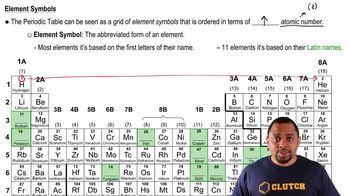Here are the essential concepts you must grasp in order to answer the question correctly.
Molecular Weight Calculation
Molecular weight, or molar mass, is the sum of the atomic weights of all atoms in a molecule. It is calculated by multiplying the number of each type of atom by its atomic weight (from the periodic table) and summing these values. For example, in C6H6Cl2O3, you would calculate the contributions from carbon, hydrogen, chlorine, and oxygen to find the total molecular weight.
Recommended video:
Molecular Formula Calculation Example
Chemical Formula Interpretation
A chemical formula provides information about the types and numbers of atoms in a molecule. In C6H6Cl2O3, the subscripts indicate there are 6 carbon (C) atoms, 6 hydrogen (H) atoms, 2 chlorine (Cl) atoms, and 3 oxygen (O) atoms. Understanding how to read and interpret these formulas is essential for determining molecular weights and understanding the composition of compounds.
Recommended video:
Intepreting the Band of Stability
Periodic Table of Elements
The periodic table is a tabular arrangement of chemical elements, organized by atomic number, electron configuration, and recurring chemical properties. Each element has a unique atomic weight, which is crucial for calculating molecular weights. Familiarity with the periodic table allows students to quickly find the necessary atomic weights needed for molecular weight calculations.
Recommended video:
 Verified step by step guidance
Verified step by step guidance


